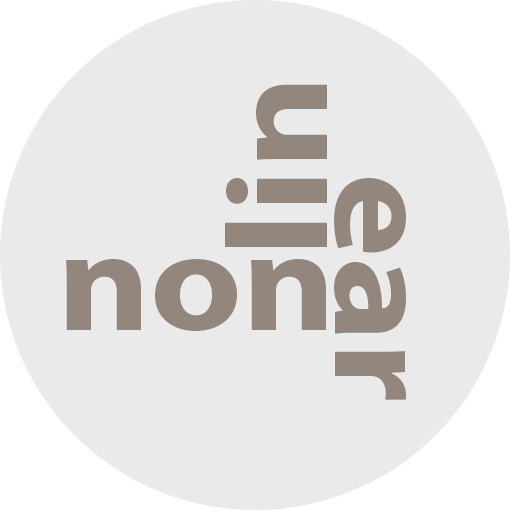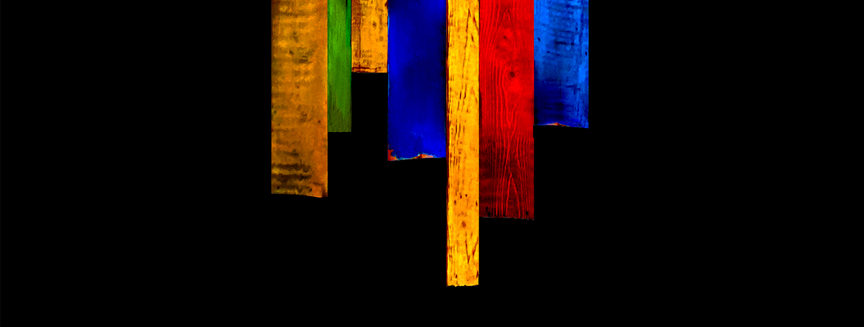

WRITTEN AND SHOT ON iPHONE BY: STEVE HOLLOWAY


The industry standard was the Graflex 4×5 (picture Weegee using his cumbersome Graflex to photograph a crime scene on the street at 2:00am).
These were the very newspapers, magazines and advertisers that photographers depended on for assignments.

The Leica was small and quiet, letting him blend in and work unnoticed.
In 2015, Holden Luntz of Holden Luntz Gallery wrote in 2015 that Cartier-Bresson’s Leica became “the extension of his eyes through which he would observe the world. The Leica freed the photographer from virtually all constraints and it never left him during his subsequent extensive travels across the globe.”

“The camera is a sketchbook, an instrument of intuition and spontaneity”.
The 4×5 Graflex was anything but intuitive or spontaneous.
Focusing the 4×5 Graflex requires you to move your eye from the viewfinder to the rangefinder, focus then move your eye back to the viewfinder and finally move your hand from the focus rail to the shutter release and capture the shot. And that was for every shot.
The M3 rangefinder allowed Cartier-Bresson to focus and shoot almost simultaneously, helping him remain unnoticed and allowing him to photograph his subjects naturally.
The quiet almost imperceptible shutter and Cartier-Bresson’s extra measure of covering the chrome parts on his Leica with black tape (and later black paint) allowed him to work without drawing attention to what he was doing.
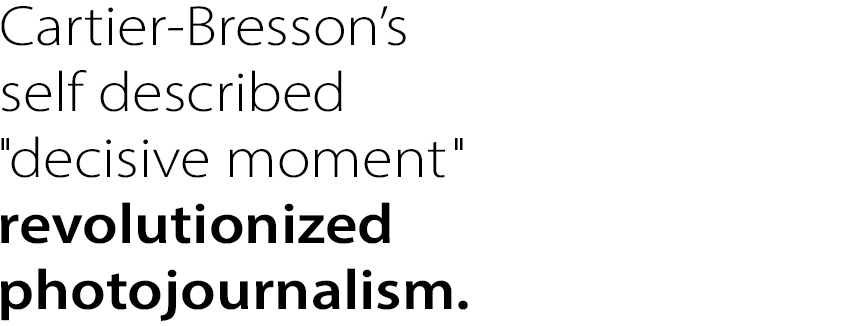
Cartier-Bresson’s ability to capture the “decisive moment,” as he described it, revolutionized photojournalism in the mid-20th century.
His Leica allowed him to shoot quickly and discreetly, an essential feature for an artist who was often in the midst of fast changing, unpredictable environments.

It was 50 years later when I first started freelancing and there were STILL some agencies who insisted on larger format image capture and refused to see you if you shot 35mm.
I can’t imagine the resistance Cartier-Bresson ran into.

Fast forward to today. The iPhone is the perfect tool for a lot of disciplines that is getting the same kind of objections 35mm cameras had.
Street photography is a good example. Working quickly in an unobtrusive way, has roots that go directly back to Cartier-Bresson.
When you photograph people, a DSLR rig can be intimidating. Shooting with an iPhone is just the opposite. People are so accustomed to selfies and smartphones that an iPhone blends in with what’s going on and adds a level of spontaneity to capturing images. Much like the Leica M3.
And Apple has engineered iPhone to become an intuitive extension of your eye.
They use three cameras set to look at the exact same point and change seamlessly from one camera to the other as you zoom in or out. At the instant of image capture, all three cameras capture the same image or video. Then Deep Fusion, Apple’s neural image processing technology, uses AI to merge images from different exposures into a single image or video.
If a lens didn’t capture parts of the image properly, Deep Fusion replaces those pixels with pixels from one of the other cameras to create the highest quality image or video possible.
Plus Apple seamlessly integrates image stabilization, high dynamic range image capture, low light image exposure and shallow depth of field focusing effects into the iPhone Pro.
And it does all of that straight out of your pocket.
Of course if you want to maintain control just switch to RAW to capture an unprocessed image that you can edit later.


Here’s what may be the iPhone’s biggest advantage. The Leica M3 was so small, light and inconspicuous that Cartier-Bresson had it with him all the time.
That’s iPhone’s advantage. It’s always with you.
It solves the biggest problem a photographer can have, watching the perfect shot happen right in front of you and your camera is in the car or back at home.

Henri Cartier-Bresson created what grew to be modern day photojournalism with a camera that suited what he wanted to shoot. He always had his Leica with him. When “decisive moments“ happened he was ready.
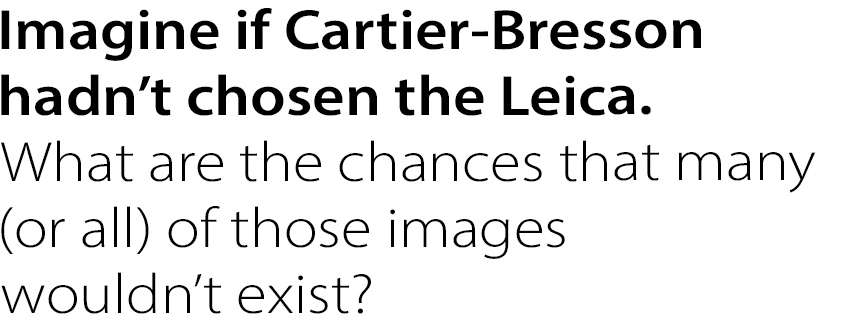
How many images would’ve happened somewhere between framing the shot, moving to the rangefinder to focus then back to the viewfinder.
A camera is just a tool in a bag. You reach in and pull out the best tool for the job.
More than any other photographer, Cartier-Bresson proved this. That it’s you, the photographer or cinematographer who makes an image or film extraordinary, not a piece of equipment.

This on-going series borrows from the long-practiced tradition of the self portrait to create tributes to photographers whose images have influenced how I work and how I tell a story with images. References portraits of and self portraits by the photographers.
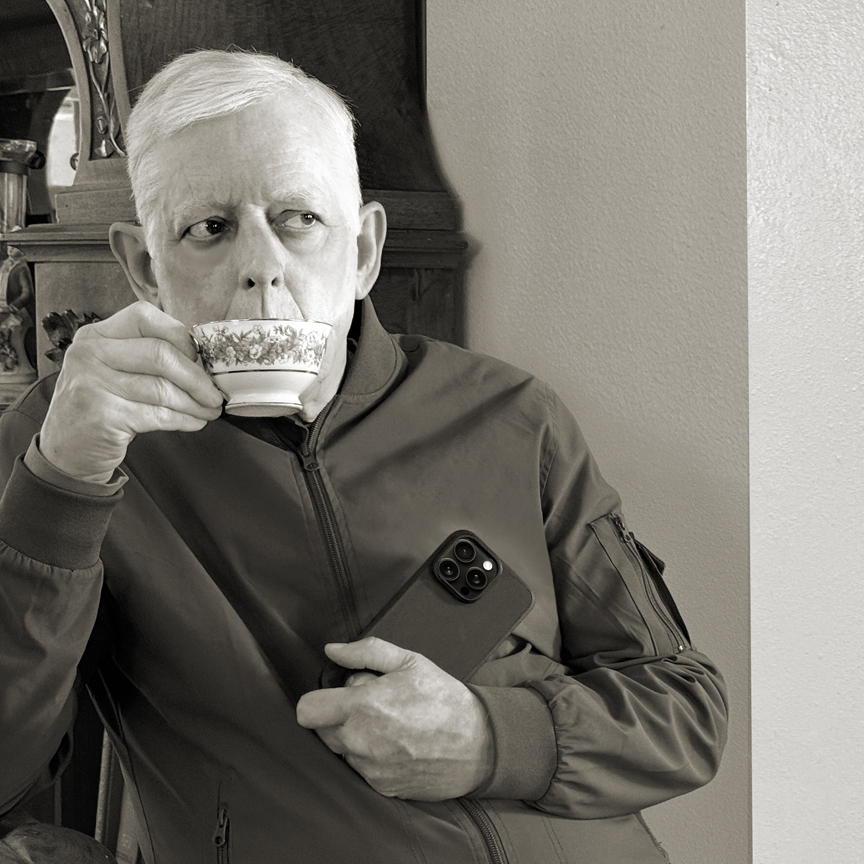
Self portrait. Henri Cartier-Bresson tribute.


Jump to any Point of View how to guide, process deep dive or a pre iPhone portfolio plus how influences shape the storytelling process and a memoir that looks at the story behind the stories and to Nonlinear Content galleries and stories.

Introduction
Become a storyteller
Technology
- 02A Digital evolution.
- 02B Annie Leibovitz.
- 02C From Batman to the iPhone.
- 02D Henri Cartier-Bresson’s Leica.
- 02E Moving from film to digital to iPhone.
- 02F The self portrait series.
- 02G iPhone camera rigging.

- 03A Working with light.
- 03B The scout.
- 03C Shooting during the golden hour.
- 03D Photographing people.
- 03E Details, shadows, shapes and textures.
- 03F Plate shots and reflections.
- 03G Feed your passions.
- 03H People and food, two favorites.
- 03I On the road.
- 03J Wall art (it’s not what you think).
- 03K Transitional images.
- 03L Night photography.

- 04B Assemblages and abstractions.
- 04C Change the composition of an image.
- 04D Color correction vs color grading.
- 04E Create motion with Live Photo.
- 04F Resize images and retain detail.
- 04G Software and skill building resources.
- 04H On device apps.
- 04I Offboard resources.

- 05A Two key iPhone features.
- 05B Camera and light kit ideas.
- 05C Copied on iPhone.
- 05D Learning post production.
- 05E Designing with type.
- 05F Learning from cinema.
- 05G The three lens solution.


